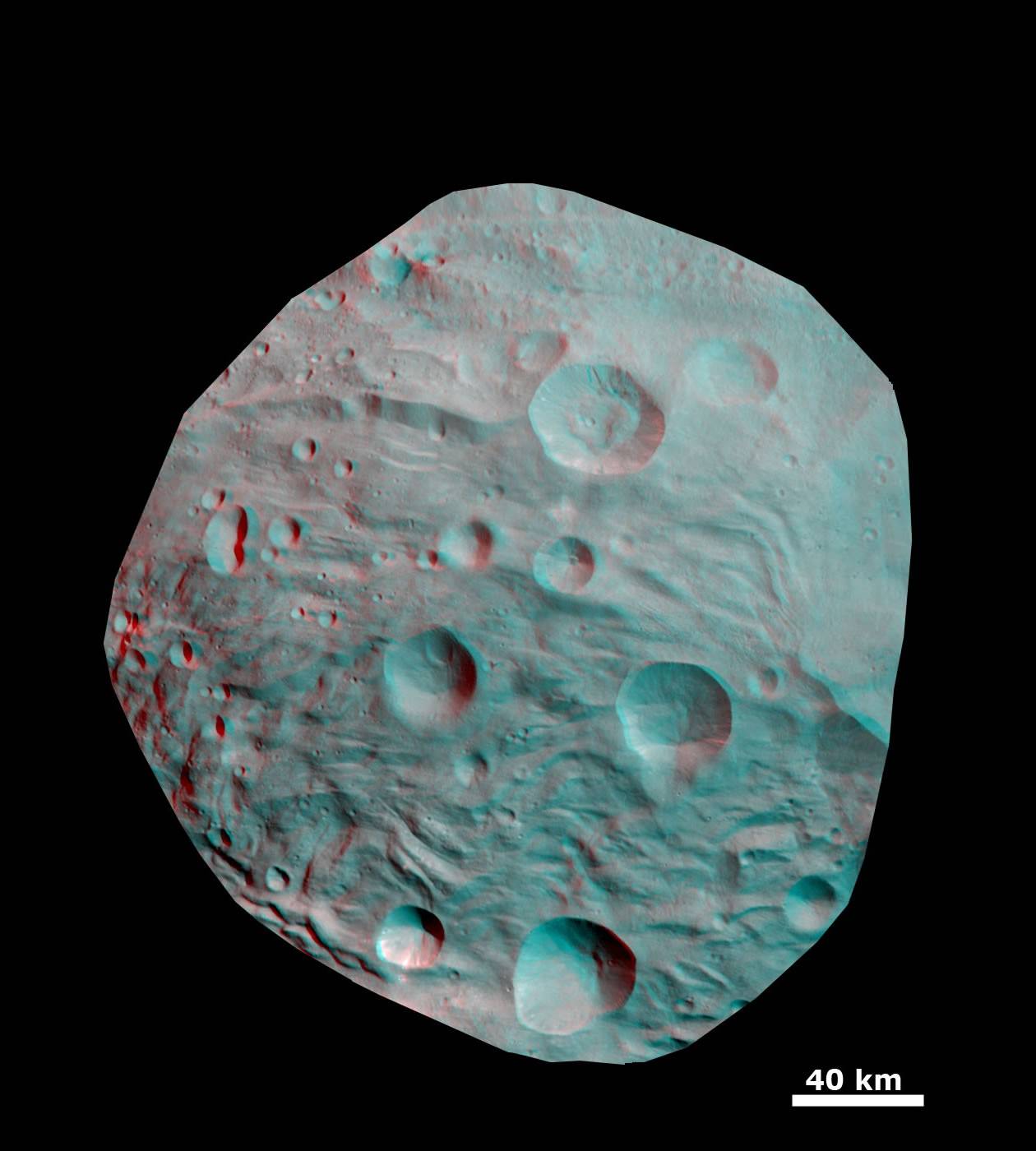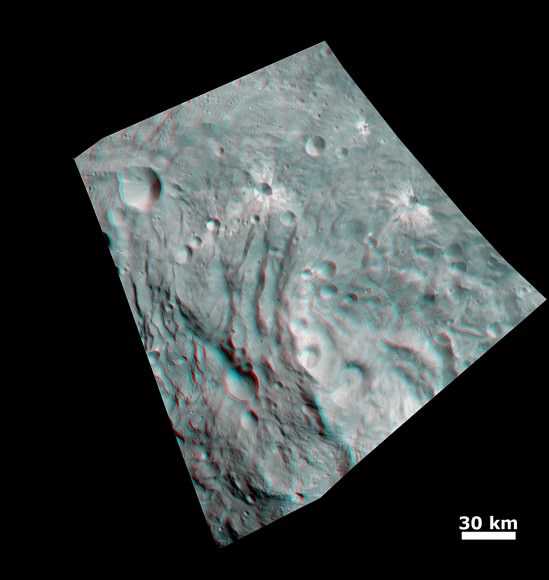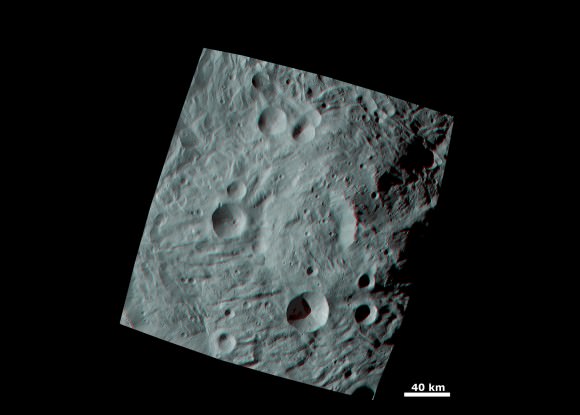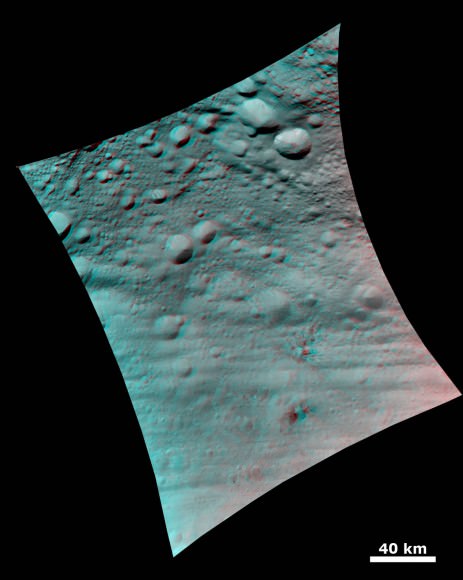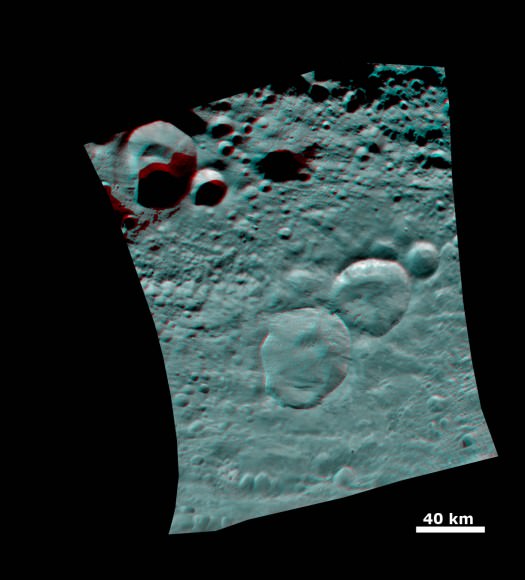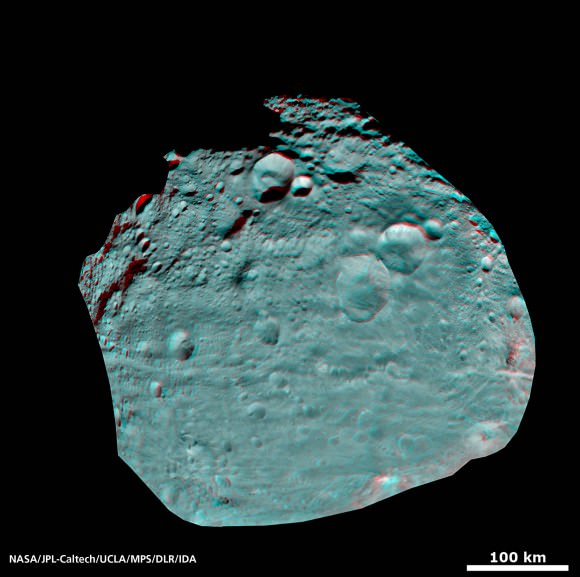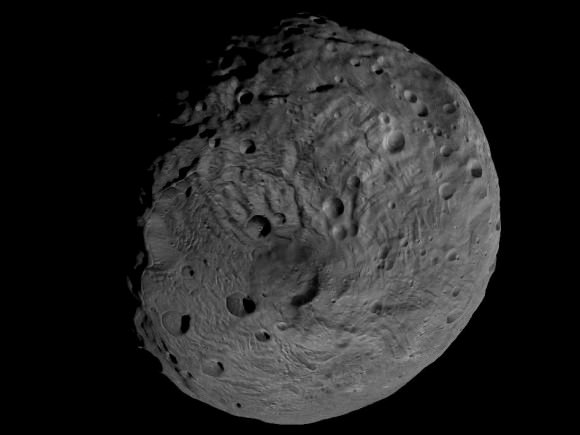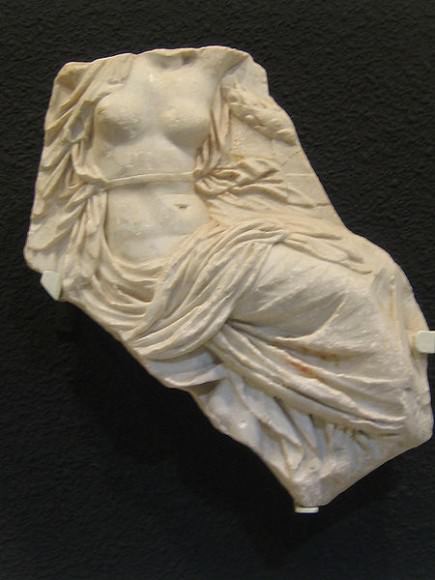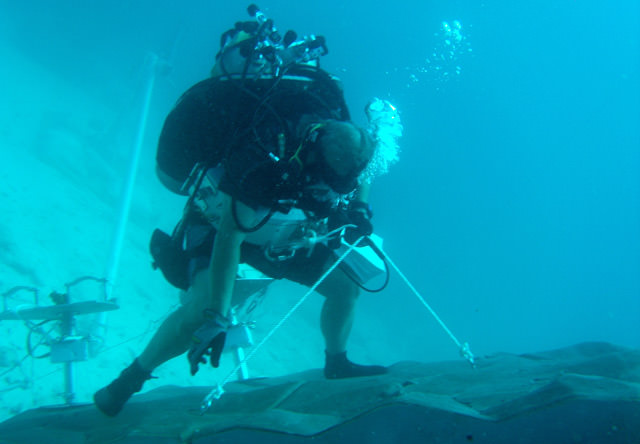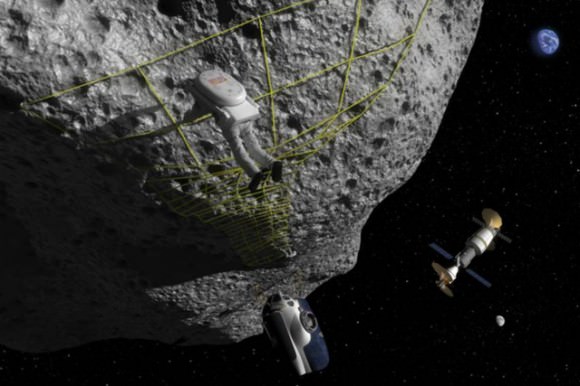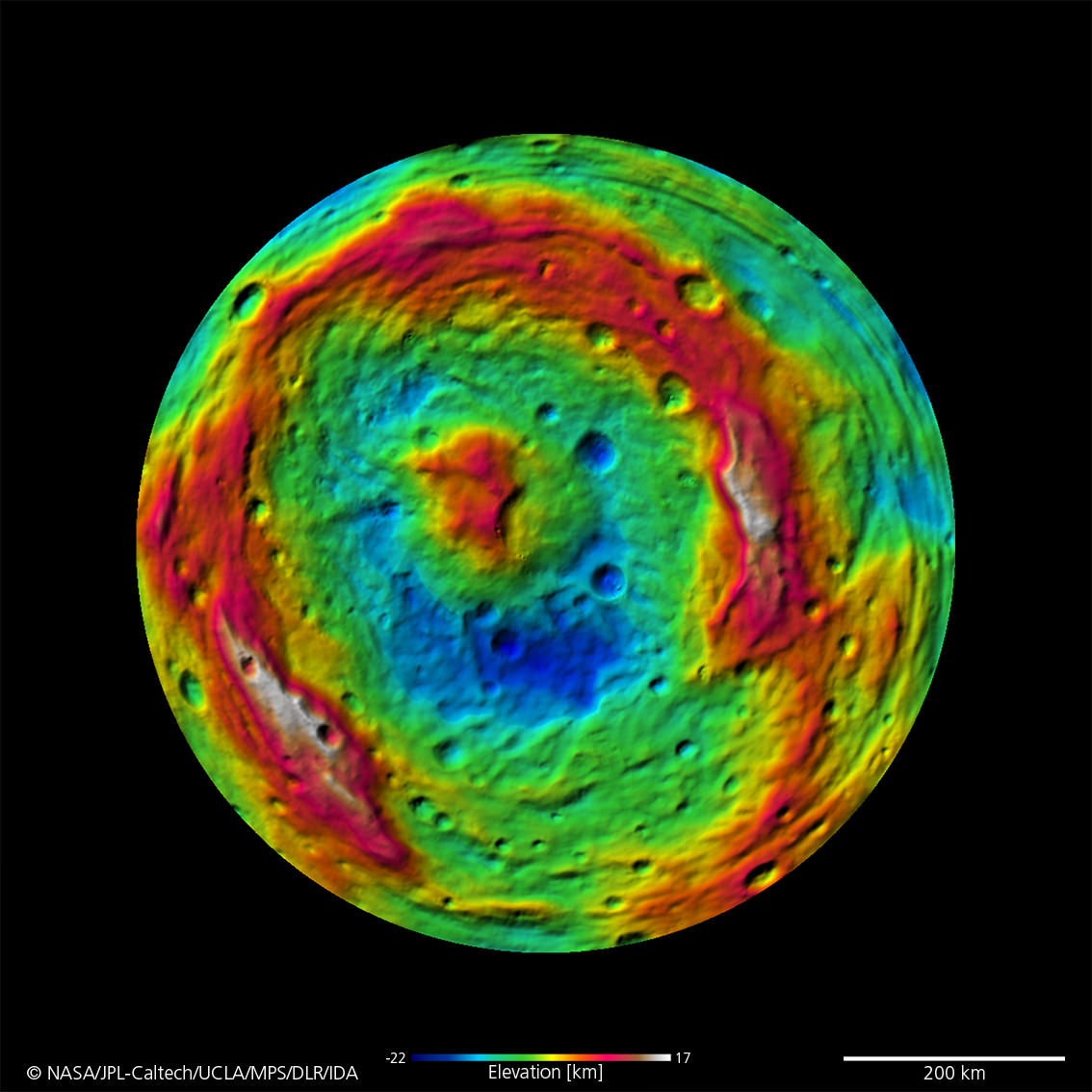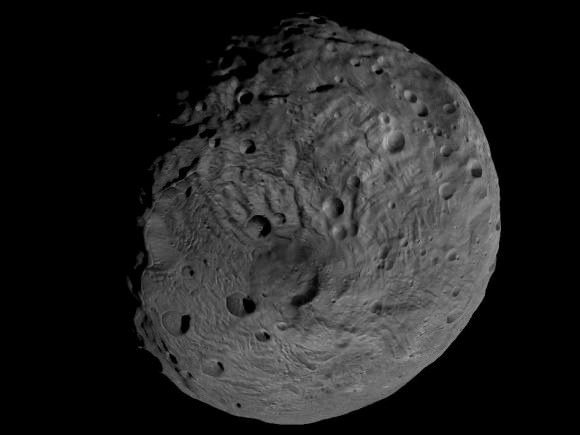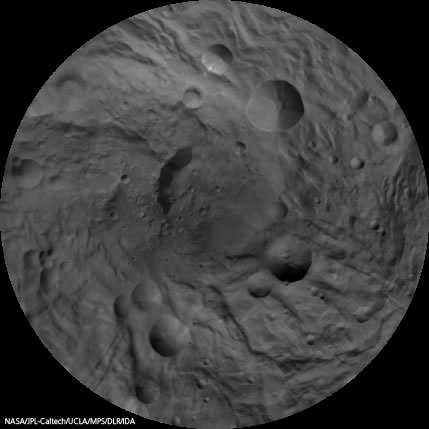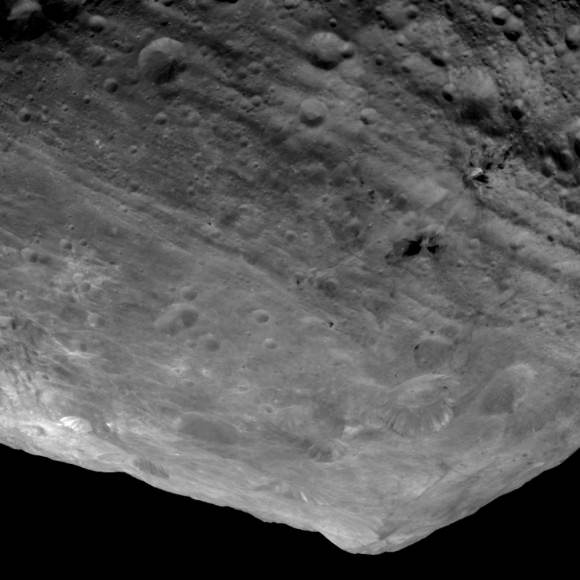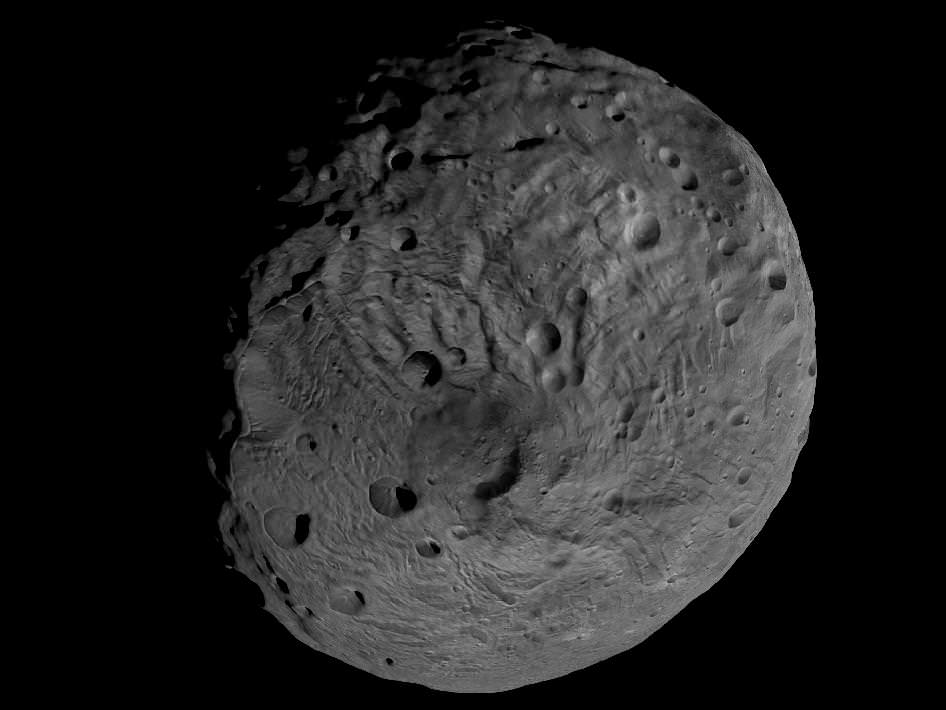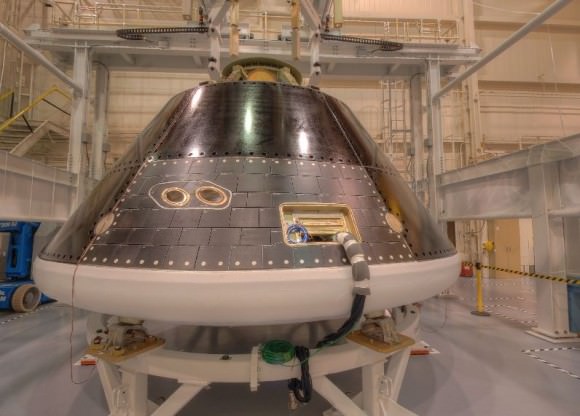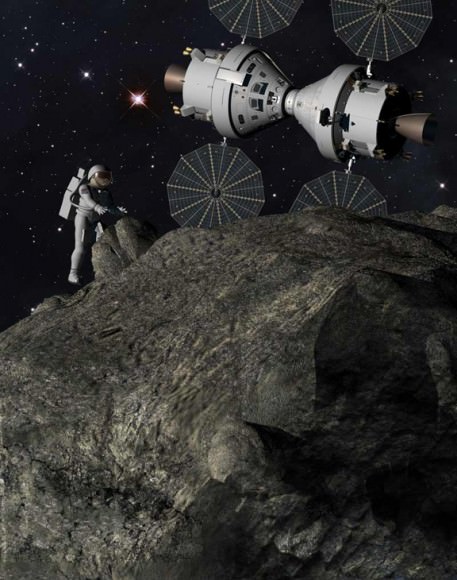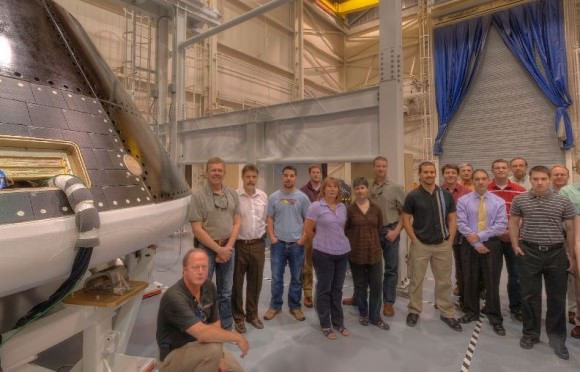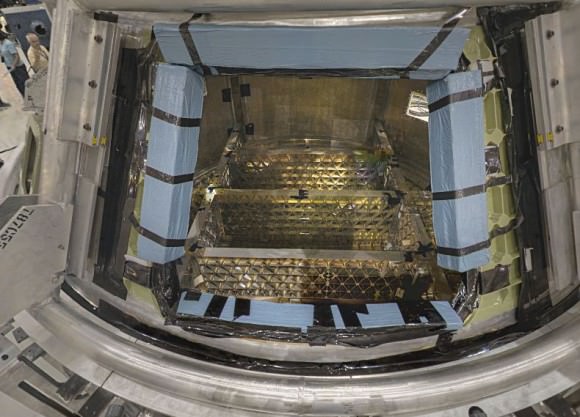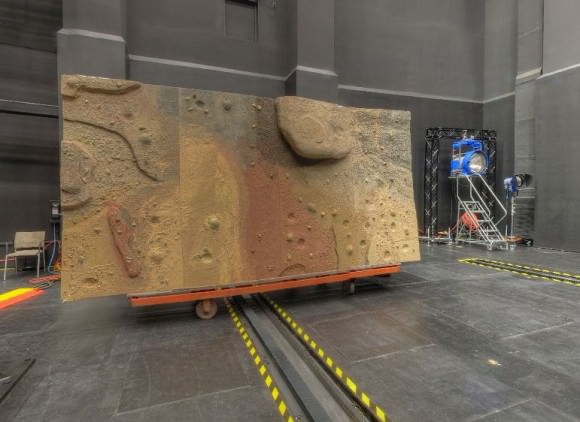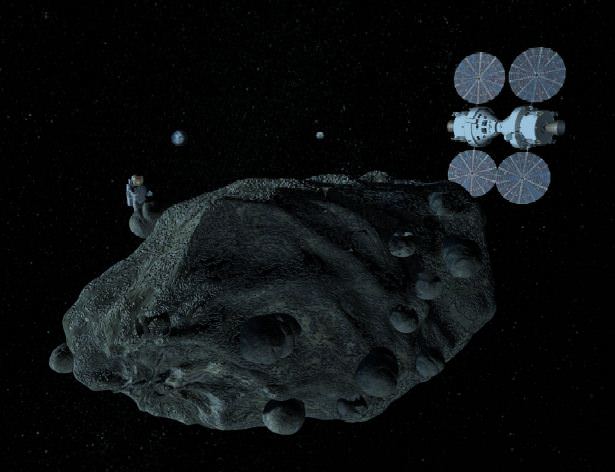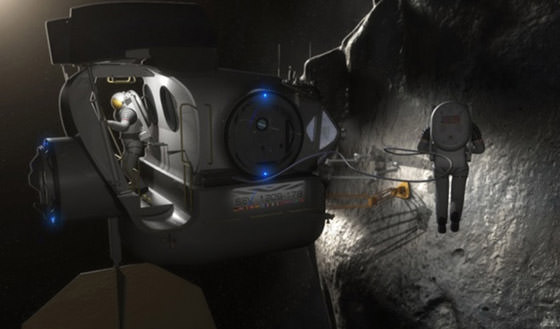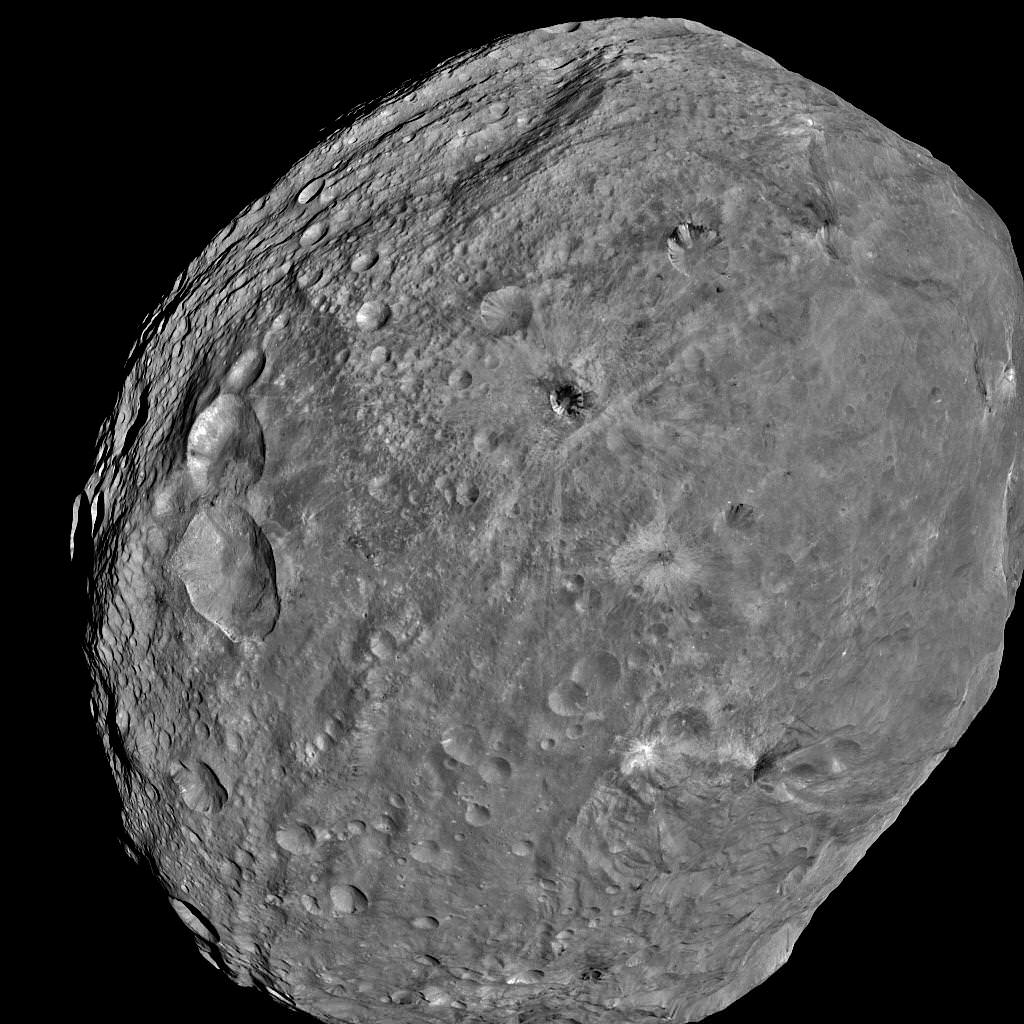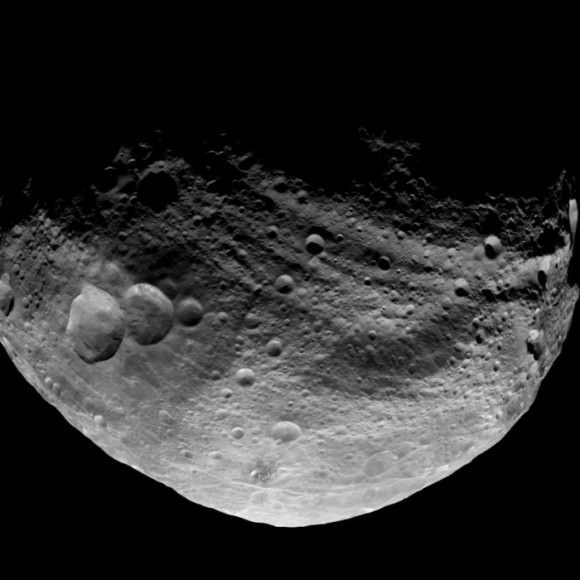[/caption]
With NASA’s announcement of its new, mammoth Space Launch System (SLS), preparations can begin in earnest for the first human mission to an asteroid. The SLS will take the Orion Multipurpose Crew Vehicle (MPCV) on the first human forays into deep space, out of the Earth/Moon system. “We are definitely excited about it,” Laurence Price, Lockheed Martin’s Orion deputy program manager told Universe Today during a briefing last week. “It is very good to get this baselined and be able to move forward.”
Lockheed Martin has been working on the Orion MPCV, which was originally part of the Constellation program to return to the Moon. But NASA has now been given a presidential directive to land astronauts on an asteroid by 2025, a mission that some say represents the most ambitious and audacious plan yet for the space agency. Orion will likely be re-worked and updated for potential “stepping stone” missions that will take humans to possible destinations such as lunar orbit, the Lagrange points, asteroids, and potentially the moons of Mars. The ultimate destination on this path is to send humans to the Red Planet.
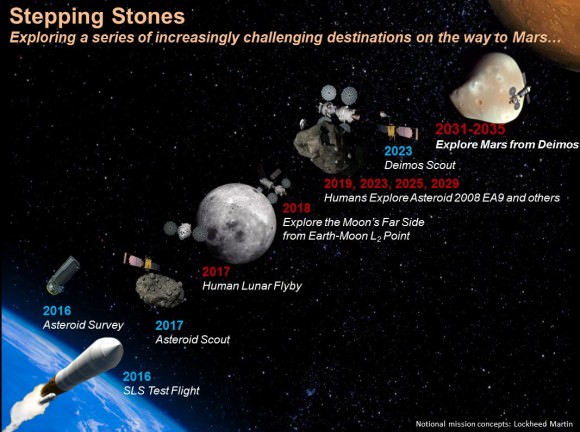
Billed as the biggest rocket ever built, the first incarnation of NASA’s SLS heavy-lift booster — which was unveiled on Sept. 14, 2011 — will stand over 30 stories tall, have a mass of 2.5 million kg (5.5 million pounds) and use a liquid hydrogen and liquid oxygen propulsion system, with 5 space shuttle main engines and an improved J-2X engine for the upper stage. (NASA just tested one of those engines). The SLS will have an initial lift capacity of 70 metric tons (mT), or about 69,853 kg (154,000 pounds) of payload into low Earth orbit. For reference, that’s more than double the lift capacity of any current launch vehicle, and it is estimated to be able to generate 10% more thrust than the Saturn 5 rockets produced at liftoff, the launchers that sent the Apollo missions to the Moon.
Later, to send the Orion and a service module out into space, the SLS would add two more RD-25D/E engines on the first stage, and the “evolved” architecture would be able to lift 130 metric tons, or 129,727 kg (286,000 pounds) of mass to low Earth orbit. This would increase the mass of the stack to 2.6 million kg (6.5 million pounds) and it would stand as tall as a 40-story building. This configuration would enable thrust of 4.2 million kg (9.2 million pounds), 20% more than the Saturn 5.
But Lockheed Martin is still in the initial stages of learning about the capabilities and timelines of the new launch system so they can produce the best version of Orion to pair with the SLS.
“While there are some challenges,” Price said, “we have been looking at various configurations of the architecture over the past year, so a lot of work has already been going on. So, any of the initial challenges, we have already worked toward mitigating.”
There are several differences between SLS and Constellation, Price said, with SLS having potentially a liquid booster with solid strap-ons instead of a solid first stage. “But we’ve been flying in space for 50 years and all the analytical tools to predict the environments, flight trajectories and flight conditions are all fairly straightforward, and we’re working to close on it. The launch vehicle design change is not a big perturbation on our ability to continue to mature the vehicle.”
In factoring the capability of how much mass the SLS can launch to deep space, Lockheed Martin can begin to work on how they would manifest the various parts of the mission.
“For example, would we launch the two spacecraft together on one rocket,” said Josh Hopkins from Lockheed Martin, in an interview with Universe Today, “and like Apollo, go to deep space quickly, or would we do what Constellation was planning, where you’d launch the larger pieces on the heavy lift vehicle and launch the crew separately on a second launch and connect them in Earth orbit?”
Hopkins is the Principal Investigator for Advanced Human Exploration Missions at Lockheed Martin, and leads a team of engineers who develop plans and concepts for a variety of future human exploration missions, including visits to asteroids.
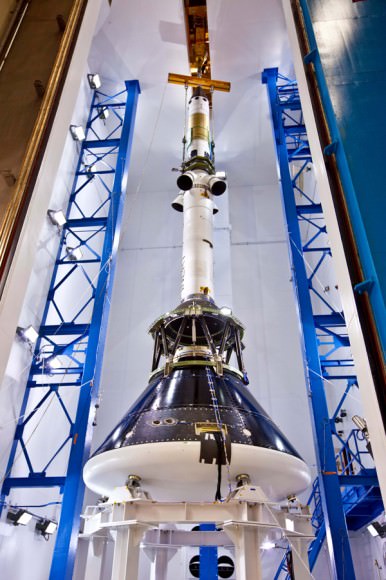
“If the two are launched separately,” Hopkins continued, “then you’d have to allocate a few days in orbit to have the two hook up, or one scrubbed launch could ruin the attempt. So those are the top level kinds of things we are looking forward to finding out from NASA. At the detailed level, we’re working on things like what the flight environments will be like, how much load will the spacecraft see. What we’ve inferred from the studies we’ve been doing is that we think that Orion is already designed to a pretty rigorous set of acoustics, dynamic pressure and G-loads during ascent.”
“We already know a lot about this vehicle, its environment, load conditions and trajectory,” Price said, “so we are accommodating the unique capability of the launch vehicle into the design of the Orion MPCV. We are already converging on how this vehicle will fly, and as soon as possible, we will transition to flying our test flights on early versions of the SLS.”
Lockheed Martin is targeting late 2013 or early 2014 for their first flight test of the Orion MPCV and they have reserved a Delta 4 Heavy for an unpiloted launch from Kennedy Space Center, but they are still evaluating what launcher would be best.
“We are identifying what the best test booster will be,” Price said, “and are trying to maximize the benefit to both programs, the launch system maturation and our spacecraft.”
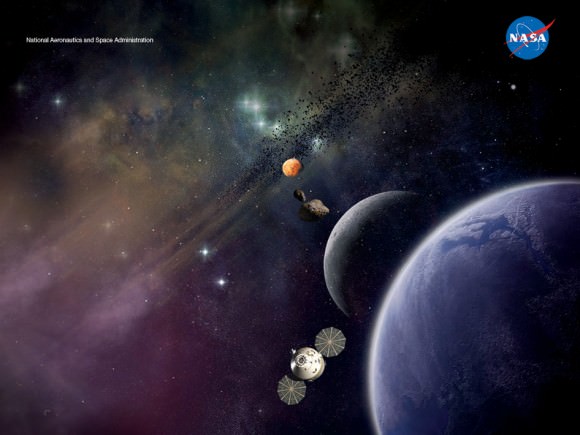
As far as actually sending humans to an asteroid, there are many details to be worked out, and NASA and Lockheed Martin must allow for all the unknowns of flying humans in deep space, including a very important one of making sure humans can endure the radiation environment in space.
Hopkins said the robotic spacecraft that have flown to asteroids and Mars have tested the environment of deep space. “So, we have elegant models of how to design systems to withstand radiation shielding,” he said, “even though we don’t know the effect of deep space radiation on people, and what the environments around small asteroids actually like.” Hopkins added that redundant systems for keeping humans safe are an integral part of Orion’s design, but NASA might also first send a robotic scout mission to visit an asteroid.
Yes, there’s much to be worked out to actually send humans to an asteroid. But one initial item of importance is knowing the timing of when SLS will be ready to do a human deep space mission, as that would determine what asteroids we’d be able to go to.
And finding an asteroid that is just right is going to be a challenge, too. We’ll discuss that in the next in our series of articles on a human asteroid mission.
Previous articles in this series:


